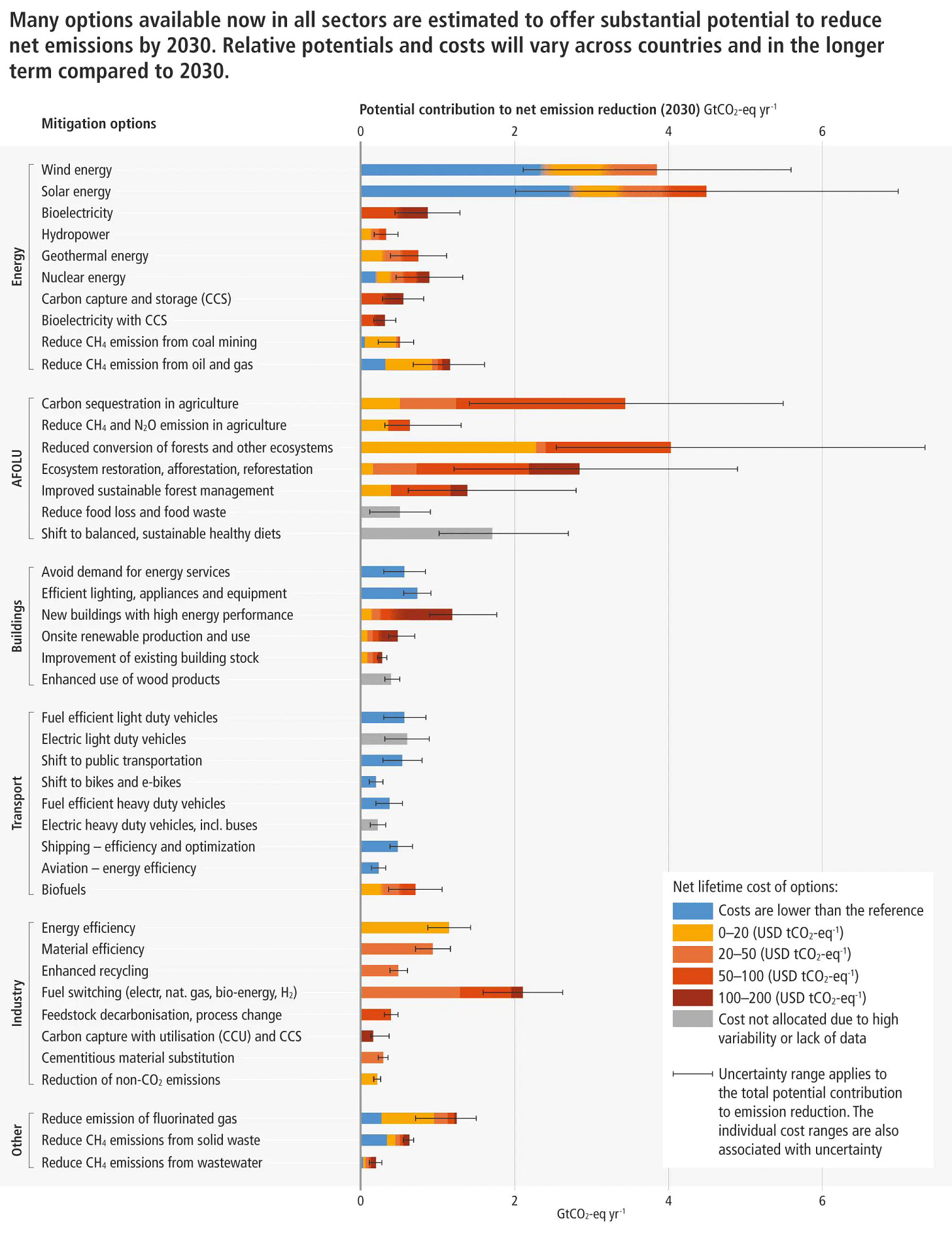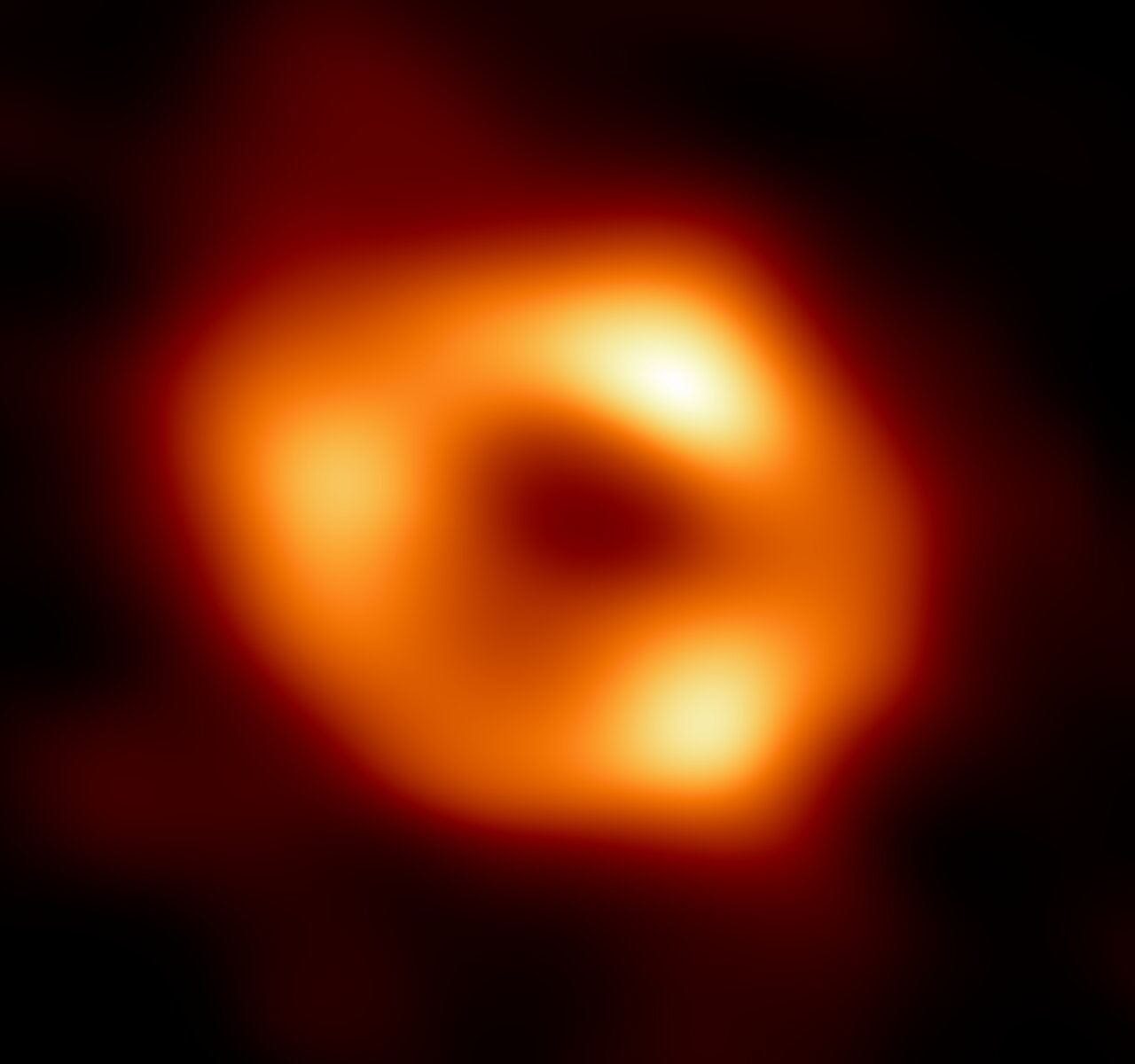To the Stars with Data: May 15 2022
A generalist AI that can complete 600+ tasks, successes in the right-to-repair battle, plant grown in lunar regolith, and much more
Hello Datanauts!
I’m going to take a break from publishing To the Stars with Data for a week. To be clear, nothing is wrong! Rather, I accomplished the goals I set when I started writing the newsletter and my life circumstances have changed, so I’m going to evaluate if this newsletter is the best way to fill my insatiable curiosity. I’ll share further thoughts in two weeks!
Now, let’s go to the stars with data!
Thought-Provoking Data Viz
🍎 The IPCC’s “low-hanging fruit” diagram to fight climate change in the next decade
Quick hits. This diagram from the International Panel for Climate Change (IPCC) shows carbon dioxide (CO2) mitigation options grouped by sector. The length of the bars illustrates each solution’s potential to reduce emissions by 2030, measured in gigatonnes of CO2, and the colors reflect the current cost of each solution, measured in the price per tonne of CO2 in US dollars. Importantly, the blue bars indicate improvements that are cheaper than today’s solutions. It’s also worth noting that these are the costs within the next decade; thanks to technological advances, many of these technologies will fall in cost in the coming decades.
Digging deeper. One gigatonne of CO2 (AKA one billion tonnes) might seem like a lot, but the world emits around 35 gigatonnes of CO2 each year (here’s a chart over time by country and region). Reductions right now are much cheaper than physically removing CO2 from the atmosphere in a few decades, which is why this chart is so important to consider. Thankfully, economies love cheaper solutions, so I’m hopeful that at least some of these reduction options (noted by blue bars) will happen without much resistance.
Earth News

🤖 DeepMind releases Gato, a generalist AI that can complete 604 different tasks
Quick hits. Earlier this week, DeepMind released a generalist AI, Gato, that can complete 604 different tasks. Some of the wide-ranging tasks include engaging in dialogue, captioning images, stacking blocks with a real robot arm, outperforming humans at playing Atari games, navigating simulated 3D environments, following instructions, and more. As is generally the case with generalist AIs, Gato is only mediocre at a number of its tasks, including chatting with humans or captioning images. Though, Gato IS better than dedicated AI algorithms at some tasks, like stacking blocks.
Digging deeper. Humans take for granted our ability to complete a large number of tasks—just think about each separate thing you do or think within the first 10 minutes of just waking up!—but each of these must be trained in AIs. (Or, eventually, an AI will become powerful enough that it will understand without needing to be trained? No one knows!) Regardless, we definitely aren’t to that point yet. A generalist AI that can complete 604 different tasks, even if some are at a mediocre level, is seriously impressive. Especially when Gato can reach this level with only 1.18 billion parameters, compared to the large language AIs that use hundreds of billions of parameters.
More Earth news
🤖Speaking of large language models, Meta releases its 175-billion-parameter language AI to the public. In addition to the code and models, they’re releasing notes that document the development process and a full logbook detailing the day-to-day training process. This is a huge help for researchers who don’t have the resources of a multi-billion-dollar organization.
🩺 Using MicroRNA therapy, researchers spur pig’s heart to repair itself after a heart attack. Essentially, the researchers injected a pig with MicroRNA that, when interacting with the heart, prompted the heart to start creating new muscle cells, thus repairing itself. (Normally, heart muscle cells that die after a heart attack do not get replaced and scar tissue forms.) Here’s the paper.
🔧 Apple just launched its first self-repair program. Other tech companies (like Samsung, Google) are about to follow. It’s about time; an independent study conducted to measure the sustainability of Microsoft products when repaired vs. replaced concluded that for the seven devices studied, repairing the product instead of device replacement can yield up to a 92% (!) reduction in potential waste generation and greenhouse gas emissions.
🌊 China will build a 590-foot-tall dam with AI-powered machines and 3D printing. The dam, when finished in 2024, will provide 5 gigawatts of electricity. Once completed, it will be the tallest structure built using 3D printing, beating out the current competitor of a [much shorter] 20-foot-tall building in Dubai.
Space News
🚀 Spinlaunch conducts another flight test, this time with a camera onboard the projectile
Quick hits. According to the Youtube video’s description: “On Friday, April 22nd, [Spinlaunch] conducted Flight Test #8 where the engineering team tested [their] first optical camera payload in our Suborbital Accelerator. Check out this exclusive onboard footage that shows the perspective of the 3-meter flight test vehicle being launched into the atmosphere at [1,000+] miles per hour. Flying with the digital camera system onboard marks an important step towards integrating complex payloads into SpinLaunch flight test vehicles.”
Digging deeper. Compared to many types of rocket fuel, using kinetic energy (and renewably-sourced electricity to power the generation of that kinetic energy) to launch to suborbit is much more sustainable and cost-effective. As noted on Spinlaunch’s website, their launch method reduces the amount of fuel required by 4 times and is 10 times more cost-effective. Additionally, they claim to be able to launch multiple times per day and operate with reusable craft.
More space news
🌱 Researchers try growing plants in lunar regolith and… it’s at least somewhat successful. The plants exhibited stunted growth and stress, but they still grew! Maybe it would be more successful if they added some of their own… you know. (Please tell me you get the reference) Here’s the scientific paper.
🕳 Researchers unveil a picture of the supermassive black hole at the heart of our galaxy. (Picture below) The black hole is roughly 27,000 light-years from Earth, 44 million km in diameter, and is a mass of 4.31 million Suns. To capture the image, telescopes from around the world combined light coming into their instruments to create a virtual telescope with an aperture equivalent in size to the Earth. Over time, it operates similar to a camera with a long exposure time.
Future-Thinking Companies
🦠 Lanzatech
Based in Chicago, Lanzatech uses microbes to process carbon dioxide from the atmosphere into useful products like fuels, proteins, and materials. In March 2022, they went public with a $2.2 billion valuation.
💨 Shine
Currently a Kickstarter campaign and based in Halifax, Shine is a mini wind turbine that’s the size of a water bottle. Weighing only 3 pounds and setting up in only 2 minutes, its power output is up to 40 watts and it can directly plug into most chargeable devices. (Based on some back-of-the-envelope calculations, a phone charger only takes somewhere between 5-20 watts, so 40 watts seems like plenty).




